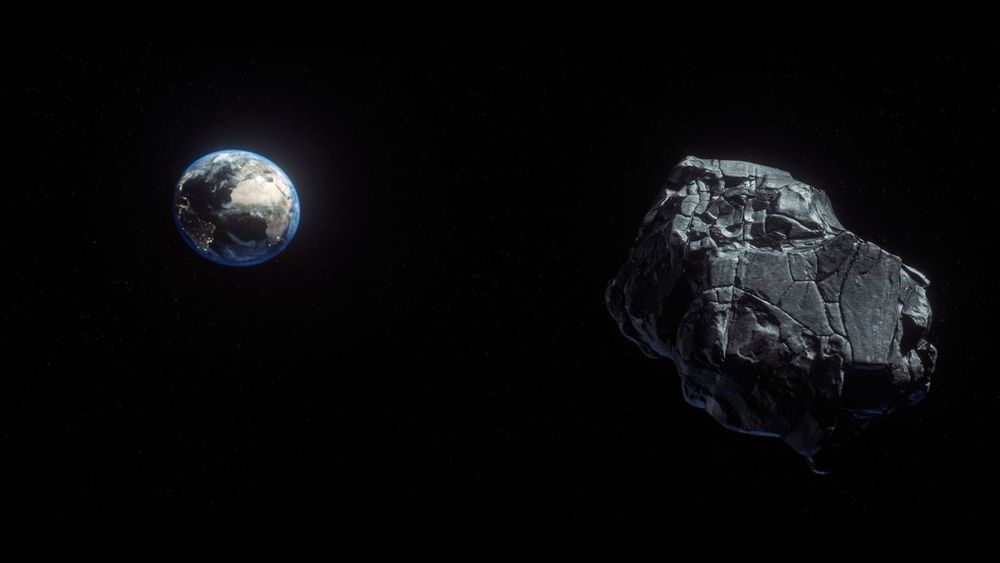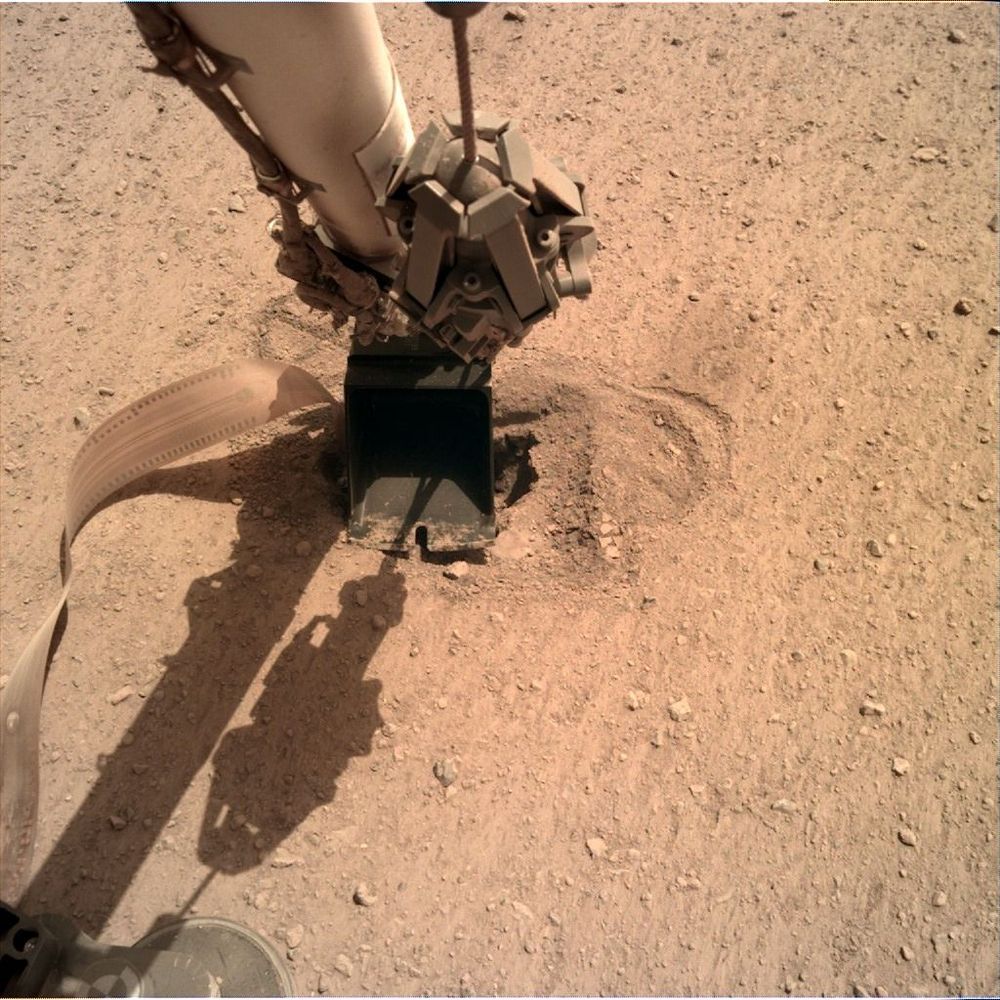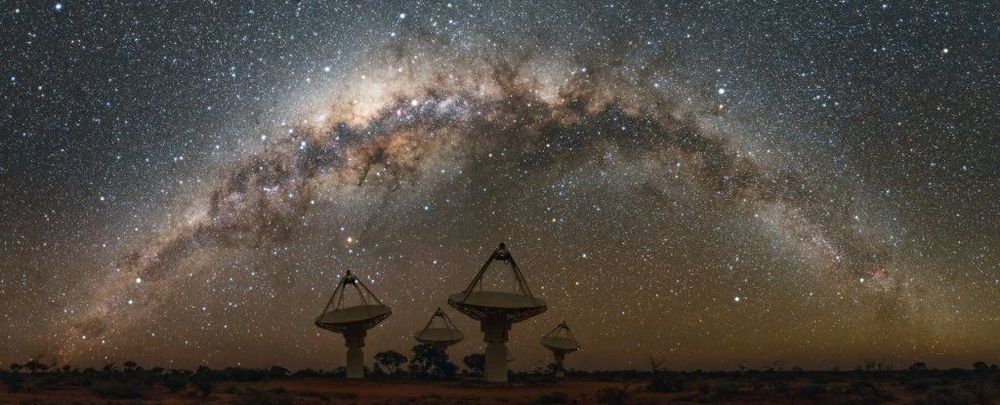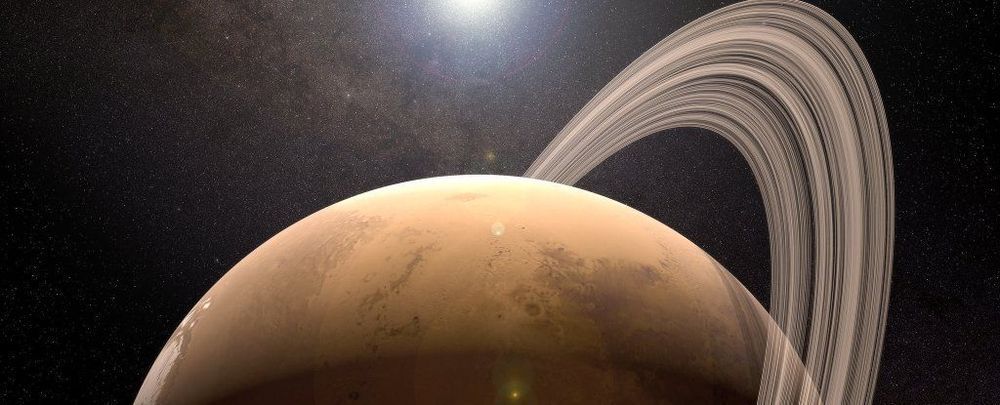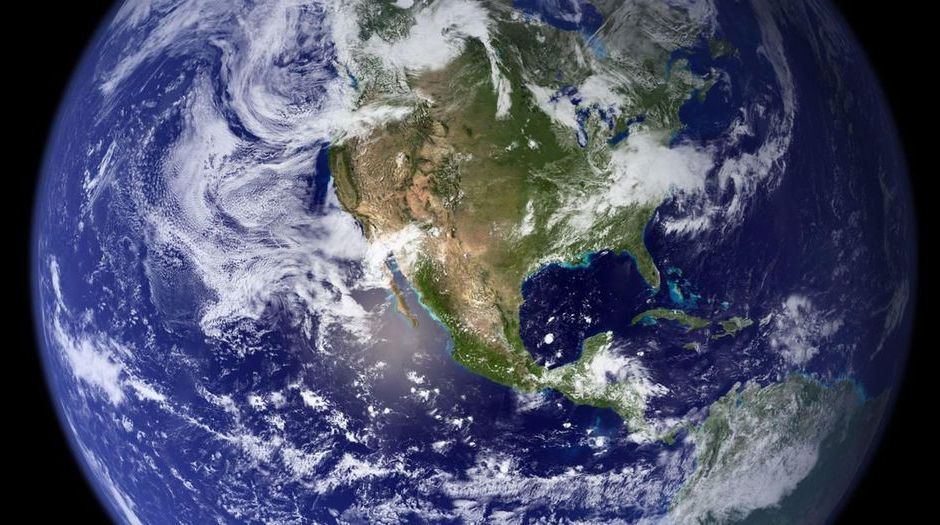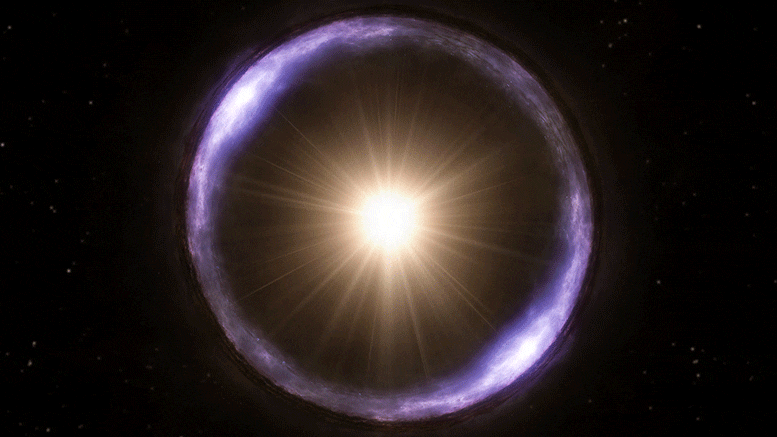Mars — glorious, dusty, complex Mars — may once have been even more dazzling. New research provides even more evidence that a rubbly ring once circled the Red Planet.
The new clue lies in Deimos, the smaller of the two Martian moons. It’s orbiting Mars at a slight tilt with respect to the planet’s equator — and this could very well be the result of the gravitational shenanigans caused by a planetary ring.
Ring systems aren’t actually all that uncommon. When you think about ring systems, your mind immediately leaps to Saturn, no doubt — but half the planets in the Solar System have rings, Saturn, Uranus, Neptune, and Jupiter. Dwarf planet Haumea, and centaurs Chiron and Chariklo also have rings.
